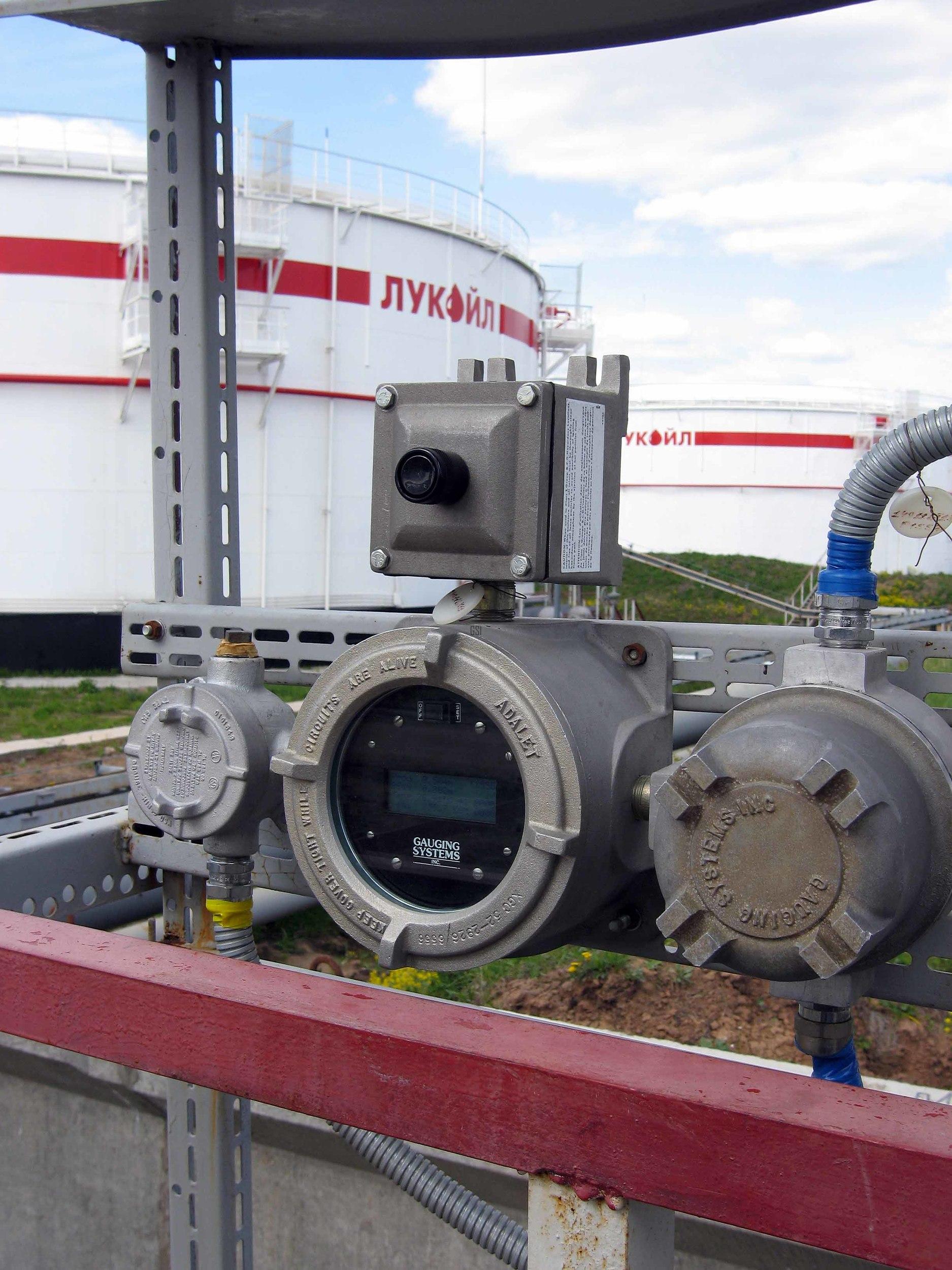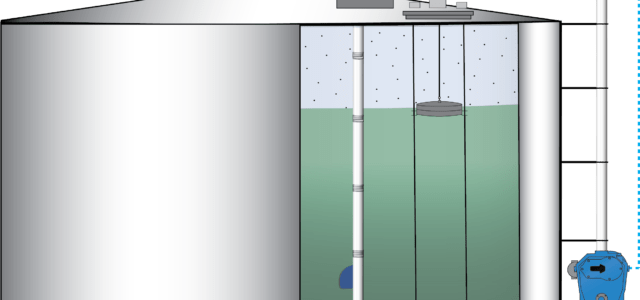Fiber Ethernet Tank Farm Topology
The major cost in any tank gauging or tank farm automation project is the field wiring. Normally two-thirds (2/3) of the cost is for wire, conduit, electrical fittings, etc. The upgrade of older technology in the field is often delayed because of the capital needed to replace the communications infrastructure. This means the benefits are also delayed and costs you more money.
An ideal communications Topology would be designed to:
- Reduce the cost of cabling vs. conventional wire
- Increase the reliability and data throughput speed
- Provide electrical isolation to field devices (against power surges and electrical storms)
- Maintenance ease by using off the shelf components
- Reduce system integration costs (electrical standards, protocols, communication devices, and software drivers)
- Provide access to multiple users, i.e., Operations, Laboratory, Scheduling, Oil Movements, Engineering, Maintenance, Safety, Environmental, Marketing, Accounting, Management, and Corporate. On a local basis or an Enterprise solution (from/to anywhere via Intranet VPN)
The standards Gauging Systems Inc. has used over the last ten years within our Tank Farm Topology are now being used in both commercial and industrial applications worldwide. It starts with a Host System. The Host System can be a DCS, SCADA, HMI, Terminal automation system, Oil movements system, or tank gauge software (GSI Win TG PRO™ Software). Most current Host Systems use Microsoft™ Windows Operating Systems (XP Professional or Vista) and employ .Net functionality.
Under GSI’s Tank Farm Topology the Host System communicates to the field (tank farm) using commercial and industrial Ethernet components. Starting within the control room, the Host System is connected to a Master Smart Switch using a standard Ethernet connection (10/100BASE-T or 10/100BASE-FX) or from a serial port to an Ethernet Bridge.
From the Master Switch, fiber cable is run to field mounted industrial quality Smart Switches, thus establishing a Fiber Ethernet network. Depending upon the Smart Switch selected, one particular Master Switch can be cabled in a ring, i.e., a primary cable run with a return loop to the Master Switch.
The Master Switch sends a packet out over the primary fiber cable and awaits the receipt of the packet. If the packet is not returned, the Master Switch assumes that there is a fiber cable or switch problem. On the next communication, the packet is transmitted in both directions over the primary fiber cable and the return loop fiber cable. Diagnostics can then identify the location of the problem, i.e., device or fiber cable, as well as restore communication with all working network components.
The field installed Smart Switches then communicate to Ethernet devices (GSI CIM, E/RTU, NET/IFI, E/IFI, or E/TGI) or Ethernet ready Tank Gauges (MTG, CAP3, 2000/APTB). Note: The GSI Ethernet devices can be used as topology convertors between most manufacturers hard wired gauge (protocols/electrical standards) and MODBUS TCP/IP over Fiber Ethernet. Industrial grade fiber cable is used between the Field Smart Switches and Field Equipment to eliminate noise, lightning, water incursion, etc. Industrial Fiber can be run in the same conduit or cable trays as AC power or strung between phone polls to reduce installation costs.
Gauging Systems Inc. has installed systems using the Fiber Ethernet Topology since 1996. It is a field proven topology that reduces overall maintenance costs, and increases data throughput and speed. It allows communication for configuration and remote preventative maintenance with intelligent field devices.
Gauging Systems Inc. manufactures the following equipment using the Fiber Ethernet Topology:
The GSI-E/RTU “Enhanced / Remote Terminal Unit” is a networkable Analog and Digital I/O device. It supports eight digital inputs, eight digital outputs, eight analog inputs, and two analog outputs. One Analog input can be a three wire RTD or 4-20mA input.
The GSI-CIM “Communications Interface Modual” is a universal device for converting serial ASCII or dedicated electrical standards & protocols to/from MODBUS RTU via RS232/485/USB or MODBUS TCP/IP via 10/100Base-T or 10/100Base-FX. The CIM comes with a combination of five communication ports, these can include: RS232/485, USB2, Ethernet, or Personality Port (Dedicated and non-dedicated communication port, i.e., proprietary protocols, Radio, etc.). CIM options include: WEB Enabled, Printer, Keypad, Display, and I/O.
The GSI-E/IFI “Enhanced / Intelligent Field Interface” is a field topology and protocol converter. It can be used to convert existing vendor dedicated electrical standards and protocols from sensors to MODBUS encapsulated TCP/IP protocol over single or redundant 10BASE-FL Ethernet connections or WEB enabled connectivity. The E/IFI can support up to 32 Intelligent Personality Modules. Intelligent Personality Modules are available for most tank gauging manufacturers protocols and electrical standards. Sensors communicate with the E/IFI via hardwire, Fiber, or Radio (Spread Spectrum, G, WIFI) cabling methods.
The GSI – NET/IFI “Network / Intelligent Field Interface” uses the same hardware as the E/IFI above, however, GSI has added software to perform Volumetric Calculations (API tables, 100 point strapping tables, etc.) in the field for up to twelve tanks per unit. Thus, a host system or DCS can get volumetric tank gauge information without going through a tank gauge inventory system. The GSI – NET/IFI comes with configuration browser software that can be accessed anywhere on the network (laboratory, oil movements, maintenance) by any user with password authority. The GSI – NET/IFI can be used with any tank gauging technology that doesn’t provide volumetric calculations directly from the gauge transmitter, regardless of manufacturer.
The GSI E/TGI™ “Enhanced Tank Gauge Interface” is a local display, topology and protocol converter, data concentrator, and RTU. It is equipped with two RS232/485 ports and two Ethernet port options (10BASE-FL or 10BASE-T) each with a separate TCP/IP address. The E/TGI can be used as a local display for one or multiple tanks (Sensor Technology dependent). Sensors communicate with the E/TGI via hardwire, Fiber, or Radio (Spread Spectrum, Zigbee, WIFI) cabling methods.
A number of GSI tank gauge technologies support the Fiber Ethernet Topology; MTG™ “Multi-function Tank Gauge”, CAP3 Capacitance Accurate Probe, 2000/APTB Mechanical Gauge Transmitter, and other tank gauging technologies.
Gauging System Inc. also supplies Ethernet components used within this topology; Bridges, Smart Switches, Enclosures, Cabling, etc.




